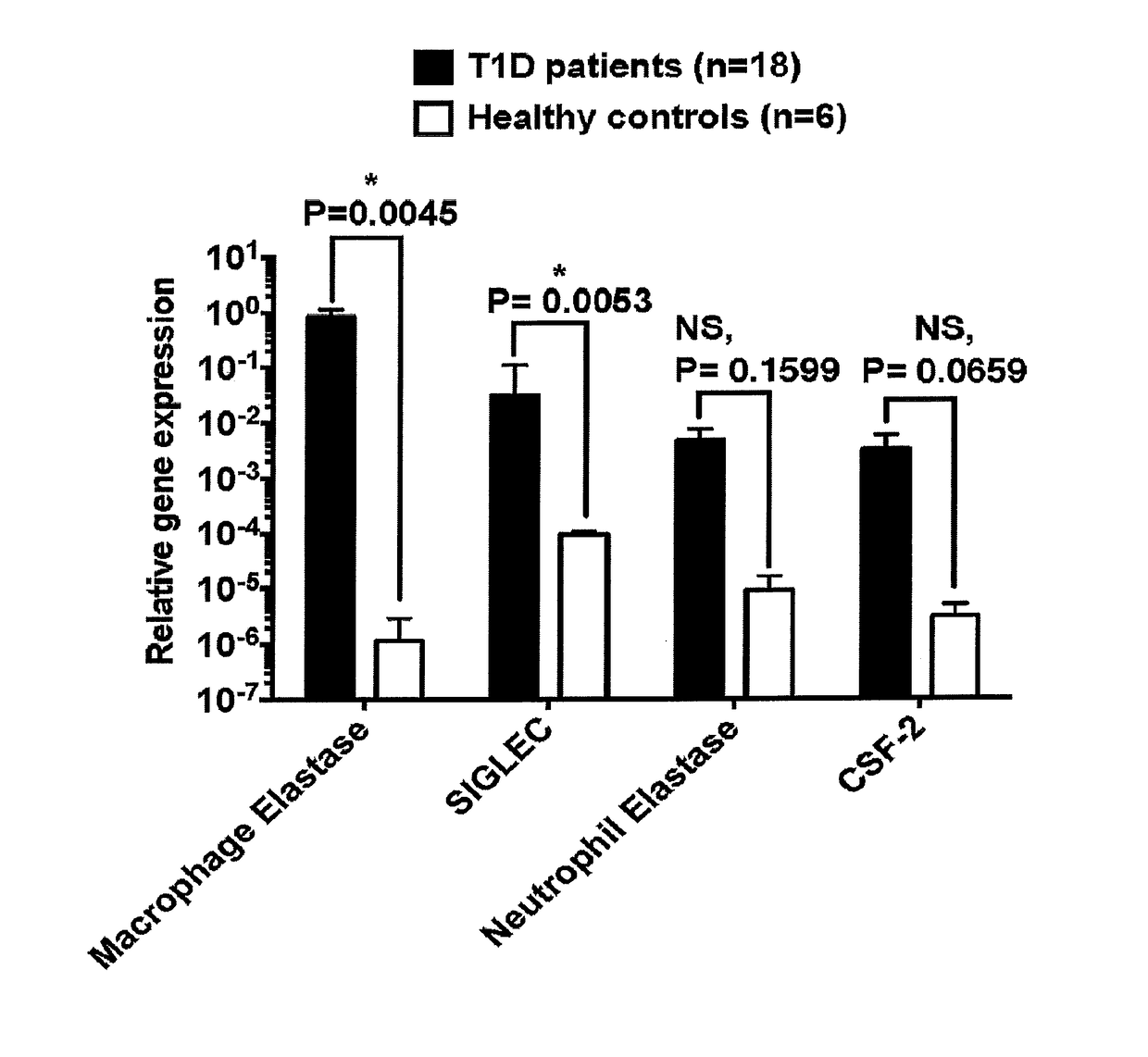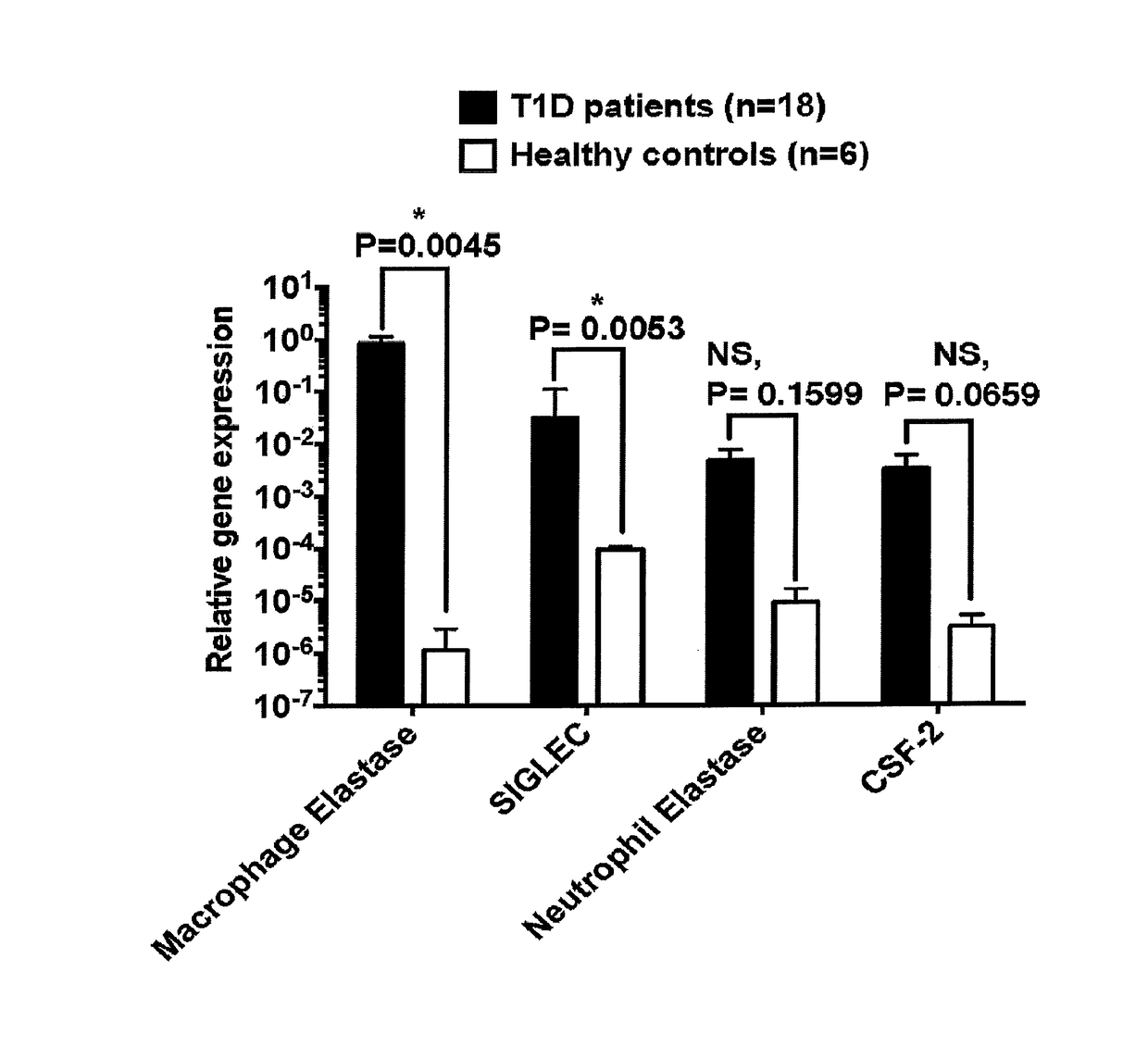Methods for diagnosing and treating diabetes
a diabetes and diabetes technology, applied in the field of diabetes diagnosis and treatment, can solve the problems of inability to pinpoint the time and intervention method for effective control of t1d, inability to accurately diagnose the time and intervention method, and sketchy details of the mechanisms involved in the manifestation of t1d
- Summary
- Abstract
- Description
- Claims
- Application Information
AI Technical Summary
Benefits of technology
Problems solved by technology
Method used
Image
Examples
example 1
Gene Expression Analysis in Mice with T1D
[0042]It has been demonstrated that the injection of the well-characterized histone deacetylase inhibitor, Trichostatin A (TSA) prevents the development of T1D in genetically susceptible stain of mice, NOD (Patel, et al. (2011) Immunol. Cell Biol. 89:640-649). Genome-wide gene expression profiling using high density DNA microarrays revealed that protection against T1D was accompanied by altered gene expression in immune cells (Jayaraman, et al. (2013) PLoS One 8:e55074). Based on this analysis, a set of pro-inflammatory genes, notably elastase, was over-expressed in NOD mice, which, like humans, develop T1D spontaneously. The inverse correlation between the expression level of elastase and protection against T1D was validated by qRT-PCR (Jayaraman, et al. (2013) PLoS One 8:e55074). Importantly, treatment with TSA provided robust protection against T1D (Patel, et al. (2011) Immunol. Cell Biol. 89:640-649; Jayaraman, et al. (2013) PLoS One 8:e5...
example 2
Gene Expression Analysis in Humans with T1D
[0052]Gene Expression in Newly Diagnosed and Long-Standing T1D Patients. Differential gene expression was also determined in a small cohort of T1D patients. Both males and females of Caucasian and Hispanic background, who were diagnosed with T1D for varying periods of time and were on medication for diabetes management, were recruited for this study. They were divided into two groups based on their age: Five were less than 18 years of age and two were >18 years old. Those that were less than 18 years of age were highly likely to represent ‘newly diagnosed’ T1D patients, whereas those older than 18 years of age had T1D for a longer period and hence designated as ‘long-standing’ T1D patients. Normal individuals, who were non-diabetic and apparently healthy, served as controls.
[0053]Fasting peripheral blood was obtained by a venipuncture and collected in tubes containing EDTA to prevent clotting. The tubes containing blood were then centrifuge...
PUM
| Property | Measurement | Unit |
|---|---|---|
| nucleic acid | aaaaa | aaaaa |
| acid | aaaaa | aaaaa |
| Structure | aaaaa | aaaaa |
Abstract
Description
Claims
Application Information
 Login to View More
Login to View More - R&D
- Intellectual Property
- Life Sciences
- Materials
- Tech Scout
- Unparalleled Data Quality
- Higher Quality Content
- 60% Fewer Hallucinations
Browse by: Latest US Patents, China's latest patents, Technical Efficacy Thesaurus, Application Domain, Technology Topic, Popular Technical Reports.
© 2025 PatSnap. All rights reserved.Legal|Privacy policy|Modern Slavery Act Transparency Statement|Sitemap|About US| Contact US: help@patsnap.com


